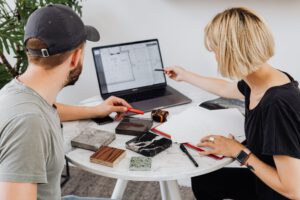Home » Posts tagged 'interior designer'
Tag Archives: interior designer
The Importance of Hiring an Interior Designer
Interior Designers work with homes, offices, and other buildings to create functional environments that are aesthetically pleasing. They also ensure that projects adhere to building codes, regulations, and ADA requirements.
Many interior designers find that transforming spaces and working with clients are their favorite parts of the job. Here are a few reasons why.
Interior designers have a lot of tasks to carry out, from speaking to new clients and answering queries to reaching out to vendors and decorators. It is important to set a schedule and stick to it to make the most of your time.
Interior design is a very time-consuming industry, with many hours of work devoted to research and analyzing spaces. It is also essential to keep an eye on trends so that you can create a space that will stand the test of time.
One way that interior designers save you time is by preventing costly mistakes during the design process. They are often able to avoid purchasing a product that is too big or too small for the room, which can result in wasted materials and money.
Another way that interior designers save you time is by making sure that all the details of the project are covered before it begins. This includes creating a detailed product list to show you exactly what is included in the design and how much it will cost.
Designers are also able to purchase items on your behalf at trade discounts from various high-street stores and online retailers, which can save you a significant amount of money.
This is a great way to save time and avoid costly mistakes that could be made by homeowners who are not experienced in purchasing furniture and other interior products. They will be able to guide you to the best options for your specific needs and help you get a better price.
If you’re looking to reimagine your home, an interior design professional can make the process much more enjoyable and stress-free. They will listen to your needs, ask the right questions, and take your vision for a spin. They will also recommend the best options for your budget based on their extensive design experience. You can expect a well-designed space that you’ll be proud to show off.
Getting started in the world of design can be intimidating, but with a little forethought and a dash of luck, you can get your foot in the door before you know it. First, make sure you’ve nailed down what type of work you want to do (residences, commercial spaces, etc.) and what type of clients you plan to serve. Then, start researching the latest design trends and emerging technologies to keep your finger on the pulse.
One of the most important things you can do to make your interior design business thrive is to build a network of professionals. Not only can this help you grow your design business, but it also gives you access to potential referrals and leads.
In addition to traditional networking events, it is also worth looking into trade shows and other networking opportunities in the industry. This can help you stay up-to-date on the latest trends and products and find new inspiration for your designs.
Another great way to expand your network is to join a business organization that focuses on the design industry. You can find these organizations online or in your local Chamber of Commerce.
Whether you are a beginner in the industry or have years of experience, joining a professional body is a great way to connect with other designers and suppliers. It also provides a variety of other industry benefits, such as a designer directory, to support your career and business development.
Regardless of the type of professional network you choose to build, it is important to have quality conversations with people you meet. You can do this by asking questions that will allow you to learn more about their business and projects.
In interior design, trends are a central idea that is used to connect different elements of the project. These ideas can be related to furniture styles, color palettes, textures and materials, wallcoverings, lighting, and accessories.